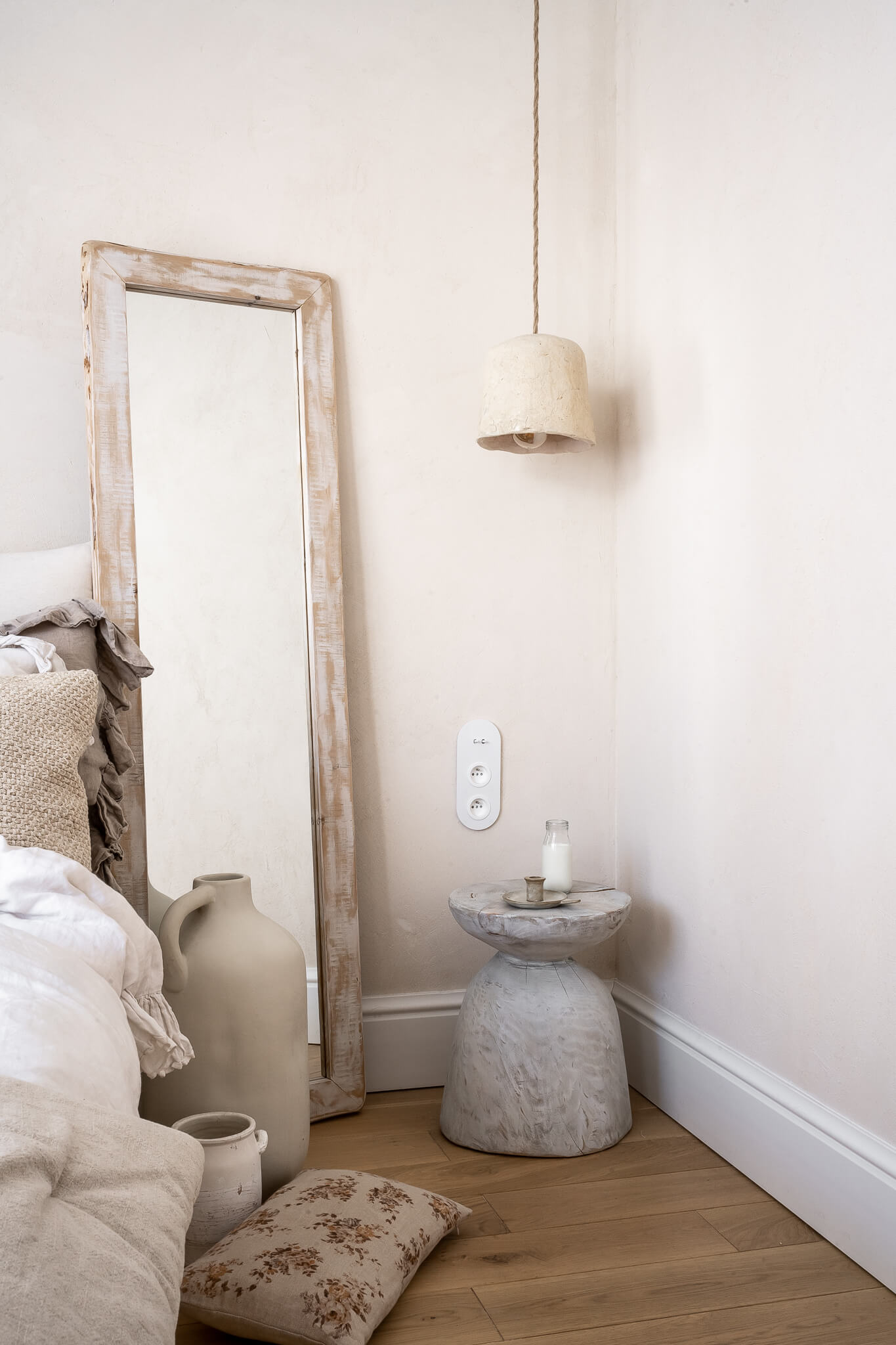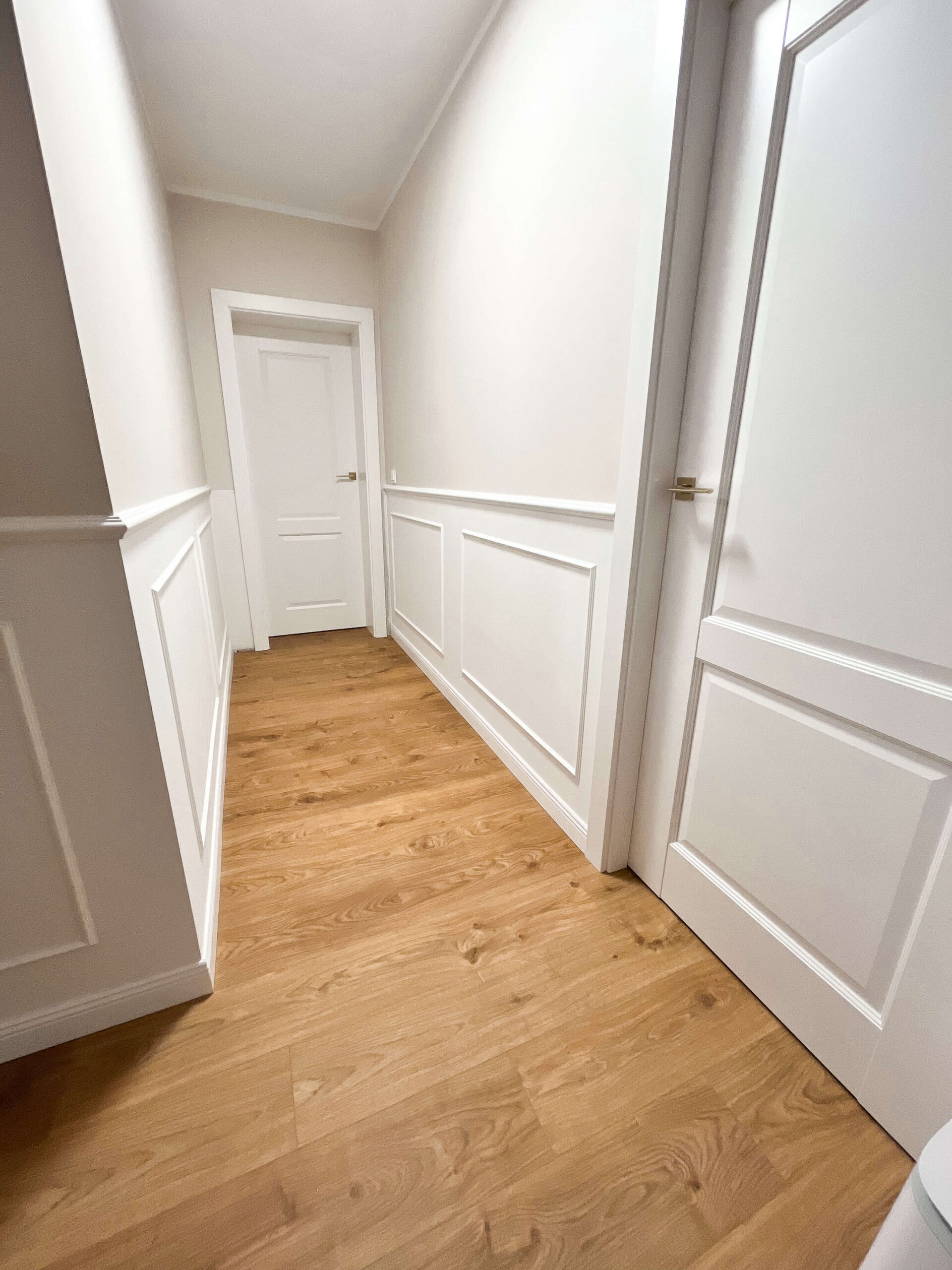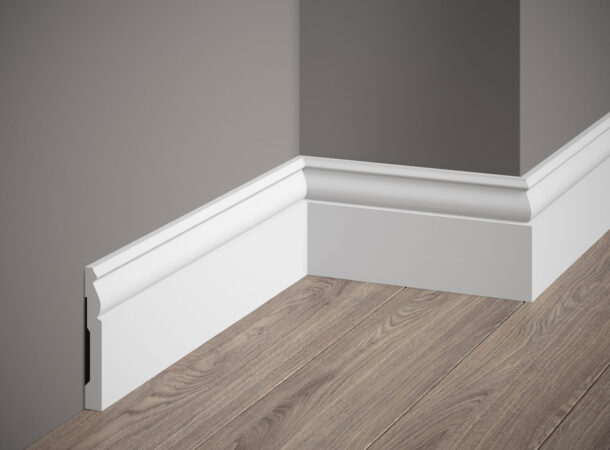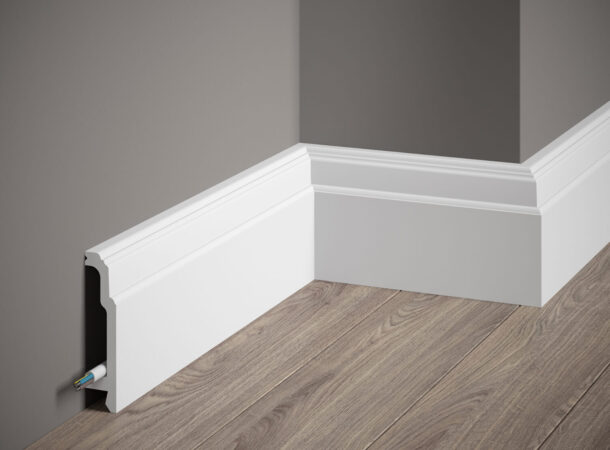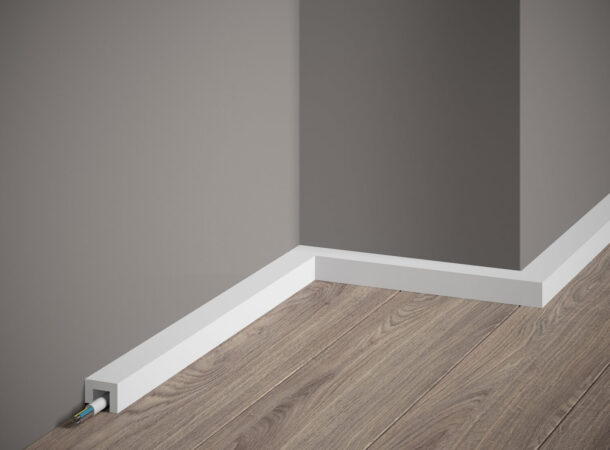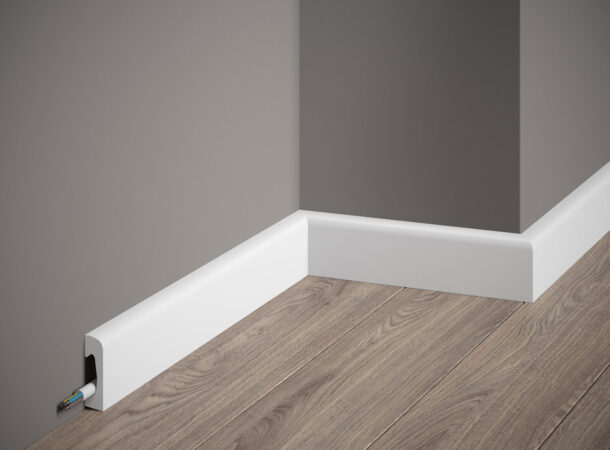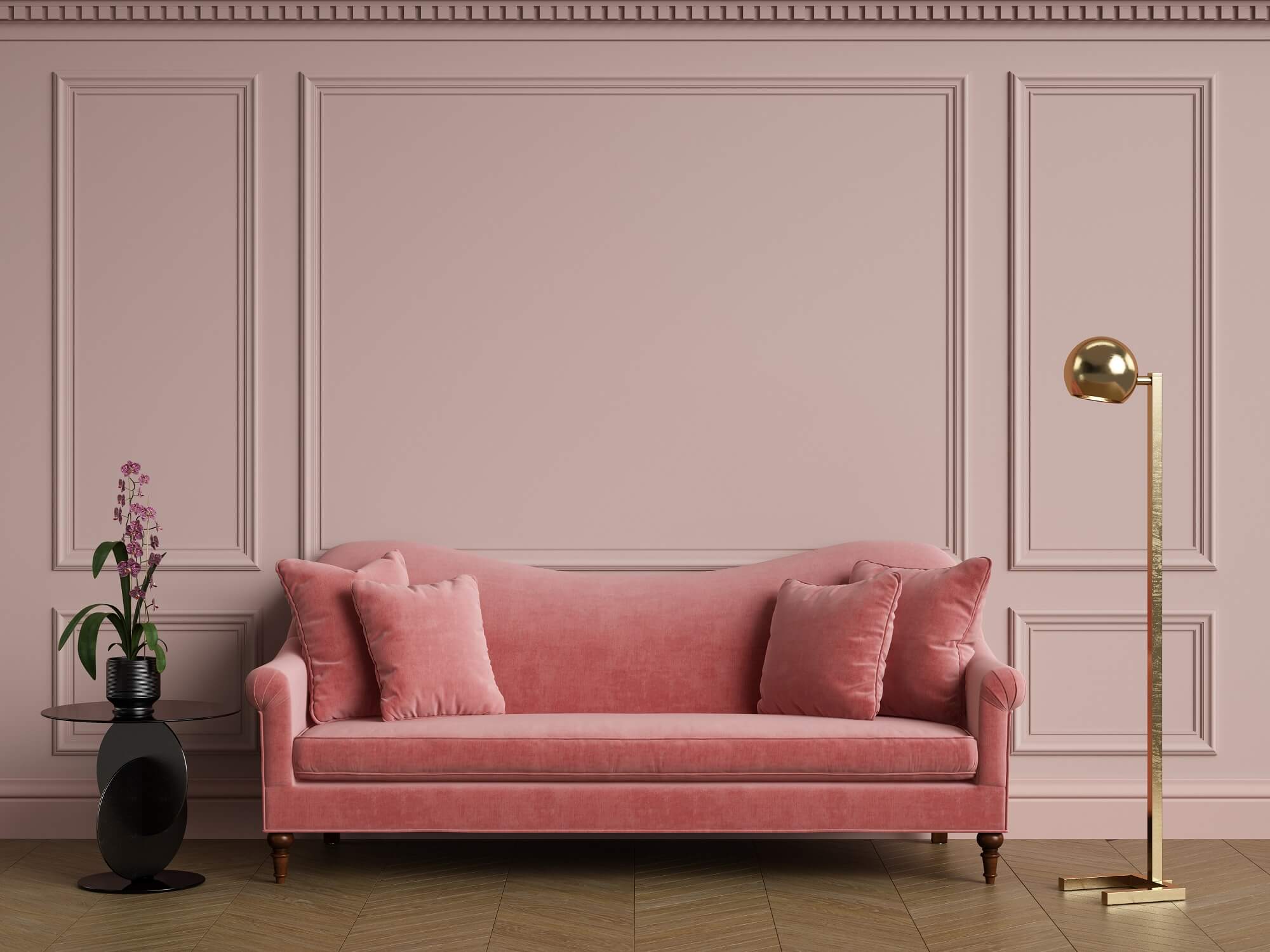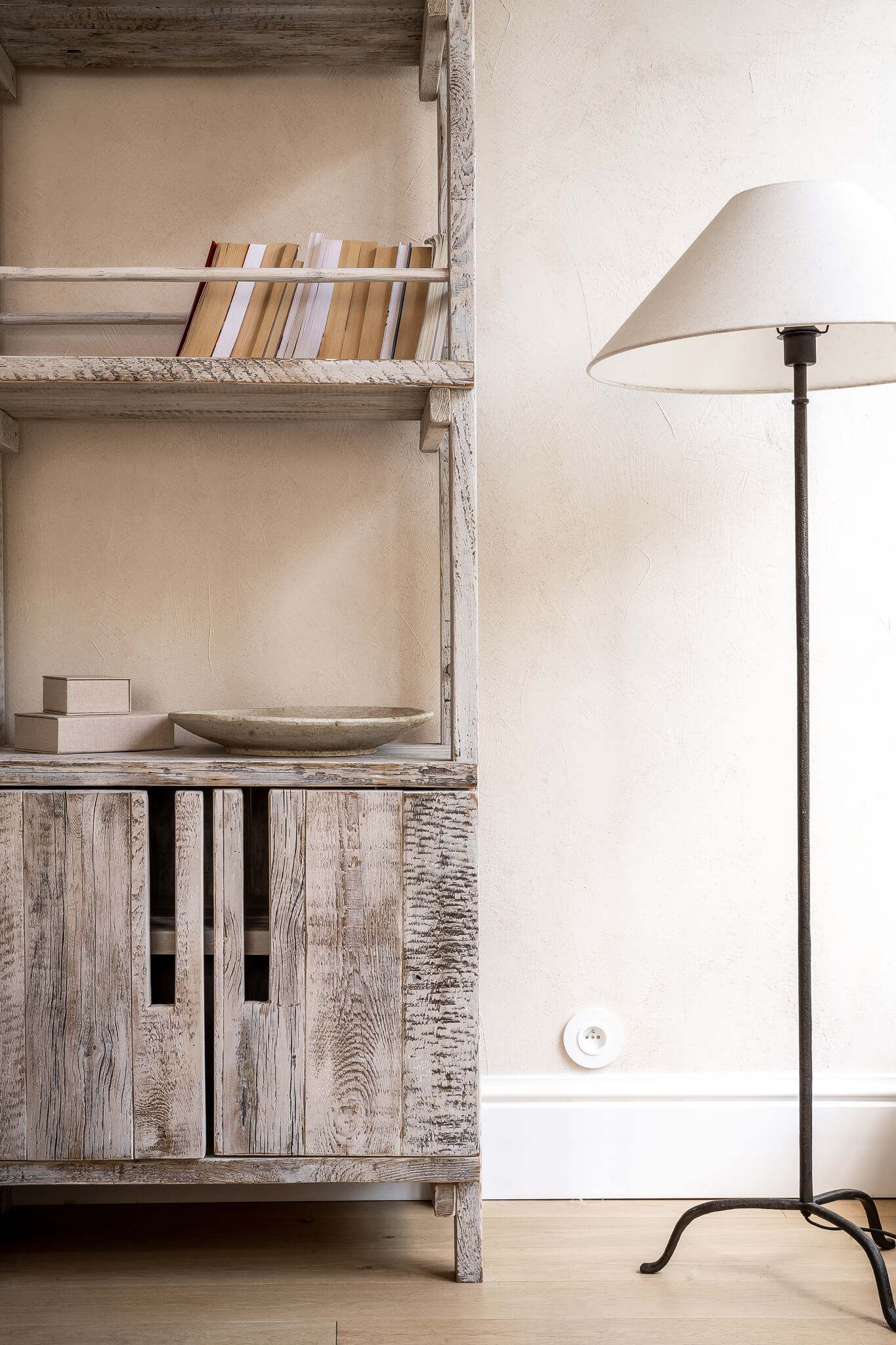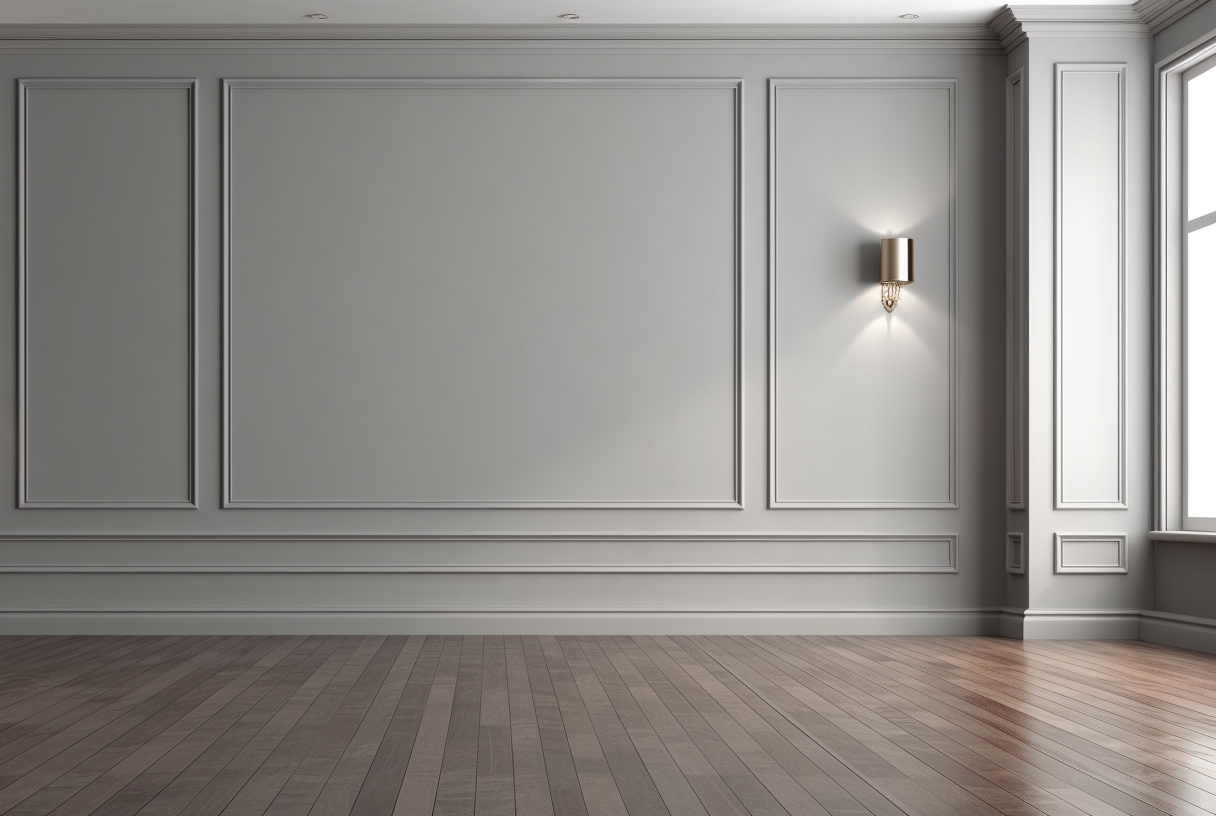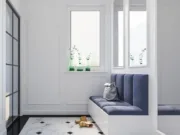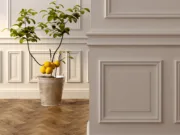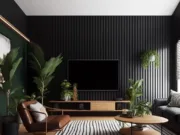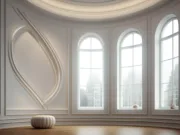Skirting boards – how to choose color?
Choosing colors in interiors is a challenging task, requiring sensitivity and understanding of the principles of combining colors and their tones. Each aesthetic interior finishing element, from furniture to accessories, plays a key role in shaping the atmosphere and character of the space. Skirting boards are a perfect example. Although often underestimated, they significantly influence the finish of the room. Choosing the right color of skirting boards is therefore not only a practical matter, but also an element of conscious interior design. “Skirting boards – how to choose color?” This is a question asked by many of us who want to create a coherent and well-thought-out interior.
Today we will delve into the secrets of color and its impact on the aesthetics of interiors. We will answer the question of how to choose and combine colors to achieve a truly designer effect that will delight everyone. We will focus on color matching, showing different ways of combining shades and tones to create a coherent and eye-pleasing composition.
When to use white skirting boards?
Although often overlooked, white is also a color and, what’s more, it is an extremely important element in interior design, as Anna Pietraszek-Sawicka reminds us in the book “Mieszkaj i żyj Kolorowo”.
White skirting boards are a universal choice that perfectly fits any arrangement – from a casual boho style, through classic interiors, to modern designs. By choosing white skirting boards, we choose a design path that allows us to create a neutral base for the interior. This is the simplest method that allows you to easily modify the appearance of the space by changing decorative elements such as pillowcases, blankets or frames.
A white skirting board, combined with light walls, becomes an ideal background for experiments with color, design, but also different styles. It’s very simple – while maintaining a minimalist base, we can in just a few moments use accessories such as blankets, heavy curtains, gray pillowcases and wooden accessories to give the room a loft character, and after half a year change it to a crystal chandelier, a shaggy carpet and light curtains in glamorous style.
However, to maintain consistency and harmony, remember to keep the colors of the walls and floors neutral. The price includes white, beige and light gray, and the furniture and floor have a light wooden finish – beige or white. However, you should avoid expressive colors of walls or floors in intense, oak colors. White floor strips, thanks to their simplicity and elegance, combined with a wall of the same color, open the door to unlimited arrangement possibilities.
It is also worth mentioning the practical aspect of arranging stucco. White skirting boards fit perfectly into small, low interiors – a white skirting board combined with ceiling stucco and a wall of the same color will visually lengthen the interior by adding a few centimeters.
When choosing white skirting boards, it is worth paying attention to the Premium Mardom Decor collection. This is a comprehensive solution that is immediately ready to be mounted on the wall (no need to paint). Premium skirting boards are covered with an exclusive SupremeSatin® coating, ensuring a perfect finish, perfect smoothness and deep, snow-white. This effect is achieved thanks to the spray coating process in a special painting chamber, which makes the surface of the strips exceptionally resistant to mechanical damage, flexible and resistant to moisture and contamination.
Color of skirting boards – what to choose?
By choosing a specific color for the skirting board, we choose the “I know what I want” arrangement path. Our interior design must then be well thought out and refined in every detail. In this option, you can boldly experiment with expressive colors, textures and non-obvious finishes. This is a more demanding approach to interior design because it requires a broader look at the room and imagining all the elements as part of a larger composition, and not just as individual components, including skirting boards.
But how to add color to the interior so that the arrangement is coherent and effective, and not flashy and kitschy? This is where the 60/30/10 rule can come in handy. In this approach, 60% is the dominant color in the arrangement. In this case, skirting boards can be an important element of the dominant color part – for example, if matched to the shade of the walls, they will visually lengthen the room, becoming the basis for further arrangement. The next 30% are secondary colors, e.g. of furniture and necessary elements in the room. Black skirting boards are a perfect example of this – installed alone, as a contrasting element in the room, they can look strange and “heavy”. However, in combination with black furniture and accessories, such as lampshades or furniture legs, black skirting boards become a coherent element of the interior.
The last 10% are accessories – it is the color in the arrangement that we duplicate in decorative elements or, as Mrs. Anna aptly calls it, “anchor” in various places in our room. For example, we paint the wall strips in powder pink, which perfectly matches the posters on the wall or the pillows on the sofa. However, when deciding on such a solution, it is worth remembering that changing accessories in the future may be more difficult, due to the fact that floor strips are an element that is more difficult to replace.
Another way to add color is to follow the “golden three” rule in colors. These can be three main colors repeated throughout the interior. Thanks to this, the arrangement becomes coherent, balanced and not “variegated”, even when using expressive shades. Focusing on a few selected colors and “anchoring” them in the arrangement allows you to create a harmonious interior.
Choosing expressive colors for skirting boards may make it difficult to change accessories in the room later, but what if you choose stucco that can be painted? Mardom Decor floor strips are factory-coated with high-quality primer paint, which smoothes and protects the surface, but also provides an excellent base for painting. The ability to change the shade of the skirting boards to any color allows you to freely experiment with the interior design and ensures that the skirting boards will always perfectly match the current decor, regardless of whether we choose subtle or expressive colors. This feature makes Mardom Decor strips not only a practical but also an economical solution, allowing you to easily and quickly adapt their appearance to evolving trends and personal preferences.
How to choose skirting boards for panels?
Choosing a skirting board for floor panels is an important decision that affects the overall appearance of any type of interior. It is worth paying attention not only to the color, but also to the patterns of stucco strips. Mardom Decor’s offer includes a variety of shapes – from minimalist to ornamental. The choice of the appropriate skirting board pattern should correspond to the architectural style of the room. For example, simple, smooth strips will work perfectly in modern interiors, while strips with decorative profiles will look better in classically decorated spaces.
When choosing panel strips, you should also remember that their main function is to mask the expansion gap (the result of installing wooden or laminate floors, or even vinyl floor panels). In order for the stucco to properly protect the substrate, it must fully cover the gap between the panels and the wall. The skirting board must therefore be wider than the expansion joints. Another function is to protect walls – from mechanical damage or floor cleaning. Stucco is made of the same materials, the most popular are MDF strips, but MDF skirting boards can absorb moisture and be susceptible to impacts and scratches. Therefore, it is worth choosing stucco that is of high quality and can be used for any type of interior.
An excellent option are strips made of PolyForce with Scratchshield® Mardom Decor technology. This innovative polymer material ensures high quality, resistance to moisture and mechanical damage. Strips made of PolyForce are waterproof, which makes them an ideal choice for installation in bathrooms, kitchens and other rooms exposed to frequent contact with moisture. Thanks to ScratchShield® technology, the strips are more resistant to accidental damage, such as vacuum cleaner hits or scratches.
Skirting boards for light floors
When choosing skirting boards for panels in light shades, it is crucial to take into account the style of the interior. Light floors are often used in the Scandinavian, wabi-sabi and japandi styles, which value minimalism and naturalness.
In the case of the Scandinavian style, skirting boards in white or light wood will be ideal, as they will harmonize with the simplicity and brightness of the space, while emphasizing its cleanliness and freshness. The wabi-sabi style, emphasizing imperfection and naturalness, is perfectly reflected in the raw-looking strips. However, for the Japandi style, which is a combination of Japanese aesthetics and Scandinavian functionality, we recommend minimalist strips with simple profiles that will combine elegance with simplicity. Baseboards in these styles should match the light floor perfectly, creating a coherent and balanced composition. It is also worth remembering to match them to other interior elements, according to the above-mentioned color rules.
Dark floor – selection of strips
In arrangements referring to the Italian style, which is characterized by richness and elegance, strips in deep, intense colors will be perfect. Black skirting boards will be the perfect choice here, as they will add a touch of luxury and sophistication to the interior, and at the same time will perfectly match the dark floor panels.
In a classic interior, where symmetry and harmony are important, it is worth considering strips that will be a continuation of the color of the floor. Dark wooden skirting boards can create a coherent whole with the floor, emphasizing the elegance and timelessness of the arrangement.
However, in the loft style, which draws on the austerity of industrial spaces, it is worth using contrasting solutions. Black skirting boards combined with dark floors will constitute a strong, distinctive decorative element. They will not only emphasize the industrial character of the interior, but will also become an effective background for bright furniture and accessories.
In each style, the selection of skirting boards is important not only for aesthetic but also for practical reasons. Properly selected strips can not only mask expansion joints, but also create a visually coherent and functional composition with the entire interior, emphasizing its individual character.

